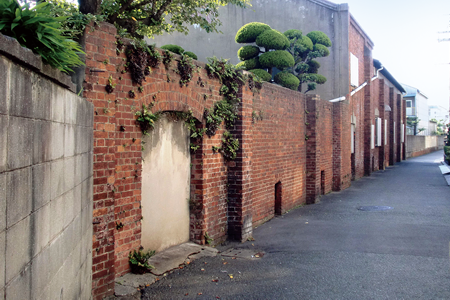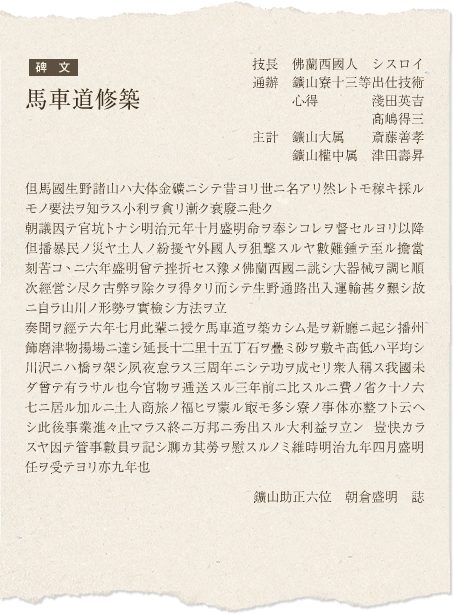
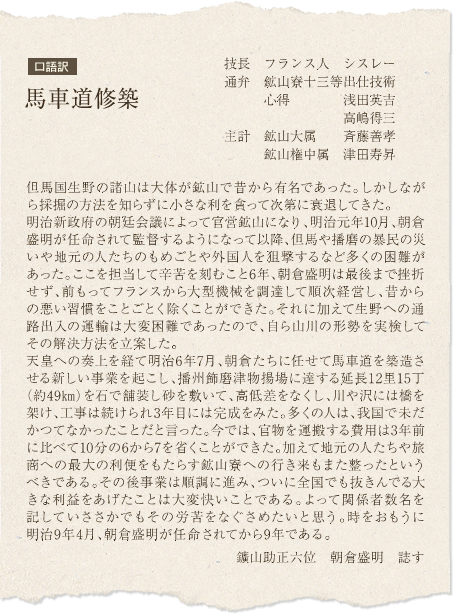
Material provided by the Himeji City Board of Education

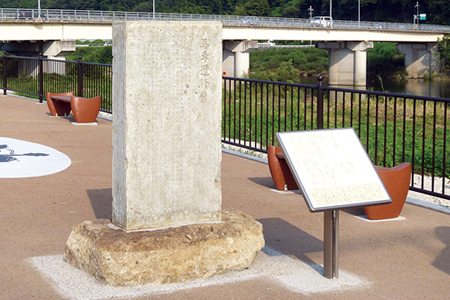
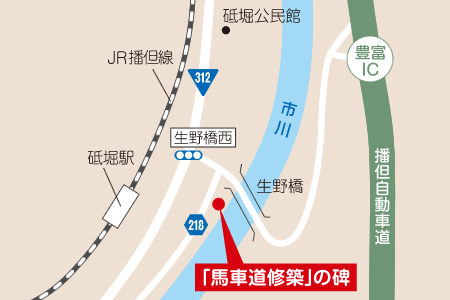
After the Meiji government nationalized the Ikuno Silver Mine, in an effort to increase silver production, the Gin no Bashamichi horse-drawn carriageway was constructed for carrying necessary materials and other goods. Making full use of European civil engineering technology, the project resulted in the construction of Japan’s “first high-speed industrial road.” The 20 bridges of various sizes built along the road were particularly difficult tasks. The longest of these bridges was the Yabutabashi Bridge spanning some 167 meters between Yabuta and Tohori villages in Himeji City. Upon completion of the horse-drawn carriageway, the bridge was renamed Ikunobashi Bridge, and the Bashamichi Shuchiku Monument was erected nearby. The reason the monument was placed here instead of at the Ikuno Silver Mine—the road’s start and end points—or Shikama-tsu Port (now Himeji Port) is said to be because this bridge was the most difficult to construct.
The monument lists not only the details and names of those who toiled on the construction of the road but also the unprecedented nature of the task as recorded by Moriaki Asakura, assigned to construct Gin no Bashamichi. The monument name—which translates to Renovation of the Horse-Drawn Carriageway—is believed to be a result of the old roads being renovated into a state-of-the art horse-drawn carriageway. The area around the monument is maintained as a small park with flowerbeds and other features maintained throughout the year.


Material provided by the Himeji City Board of Education
Blueprint of the road drafted by Leon Sisley in 1872
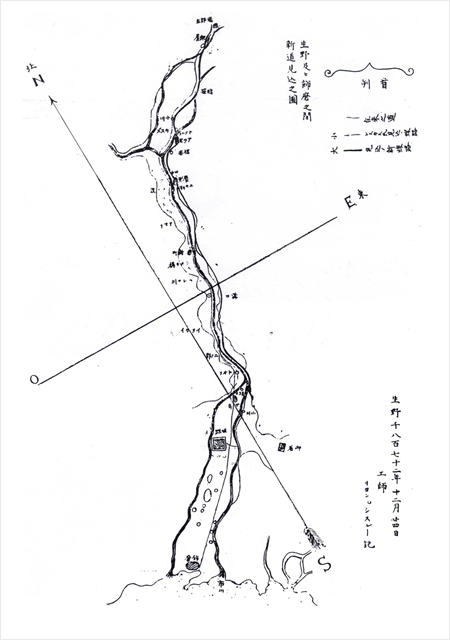 Provided by the National Archives of Japan
Provided by the National Archives of Japan
This map, published by the Hyogo Prefectural government in April 1877—just one year after the completion of Gin no Bashamichi—clearly displays the road’s route.
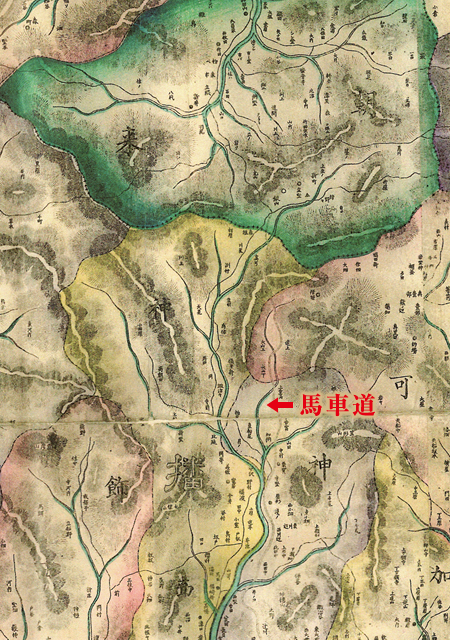 Provided by the Hyogo Prefectural Library
Provided by the Hyogo Prefectural Library
Built by Jean Francisque Coignet, the pillars of this gate feature chrysanthemum emblems. The gate was once the main gate of the former Ikuno Silver Mine Headquarters. *The gate was transferred to the Ikuno Silver Mine Historical Site in 1977.
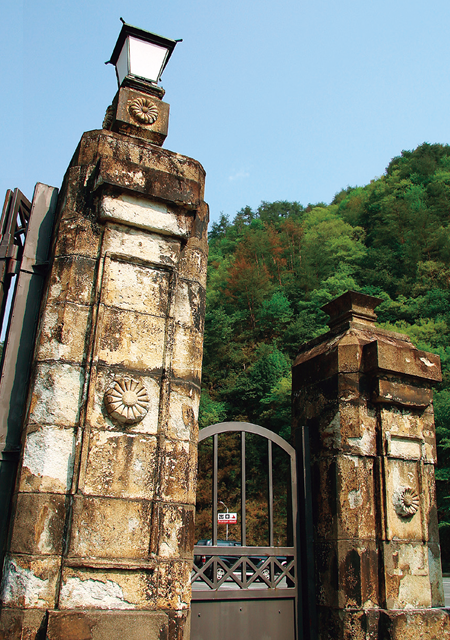
As a post town, Ichikawa prospered despite being separate from the original path of Gin no Bashamichi. The residents, however, feared that the town would soon become desolate and so sent petitions to the Shikama government and other entities asking to be incorporated into the route.
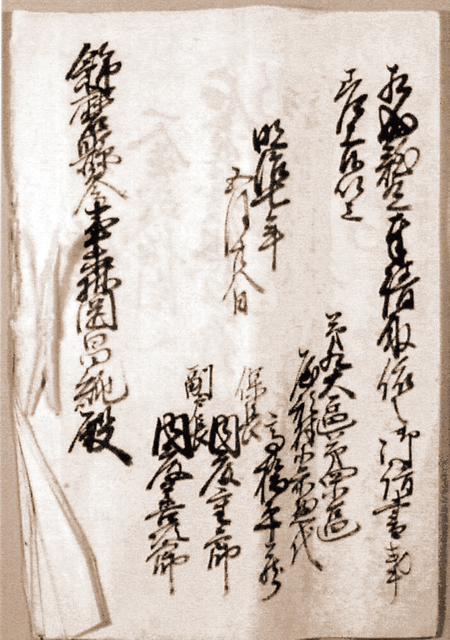 Provided by the Ichikawa Town Citizen’s Hall
Provided by the Ichikawa Town Citizen’s Hall
The Tsujikawa area along Gin no Bashamichi is dotted with old buildings including the Miki-ke family house where the head villager under the Himeji Domain lived (currently undergoing preservation work).
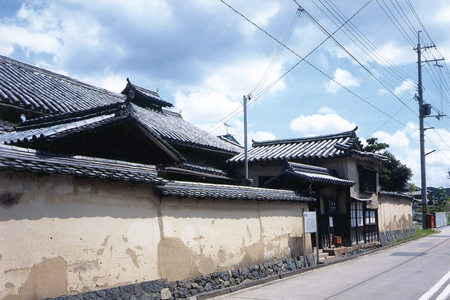
Built as a county office in 1886, this Western-style building provides visitors with a look at the Kanzaki County’s history.
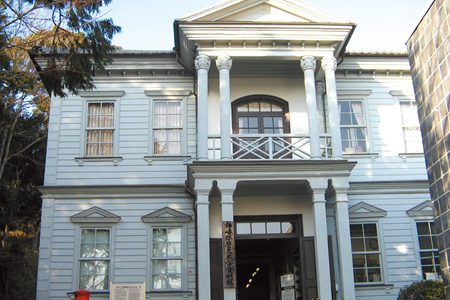
These ornamental slag stones made from solidified residue left over from the ore refining process can still be seen today on the stone revetment in Harima
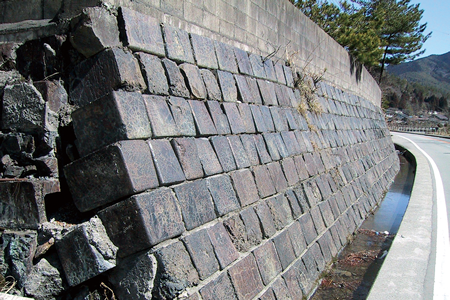
Parts of the warehouse built in the Meiji period as the arrival and departure point of Gin no Bashamichi remain in Shikama-tsu Port (now Himeji Port) even today.
